Looking to learn the difference between solid and engineered hardwood flooring? Hardwood flooring exudes a timeless charm, adding a touch of elegance to any home interior. For the modern homeowner or interior designer, the decision between solid hardwood and engineered hardwood can be pivotal to the overall aesthetic, practicality, and long-term value of the space. In this comprehensive comparison, we’ll analyze the distinct characteristics of each flooring type to help you make an informed decision.
The Fundamentals of Hardwood Flooring
Before we dissect the differences between solid and engineered hardwood, it’s essential to understand the core concept of hardwood flooring. Both variants are renowned for their durability, beauty, and ability to add significant value to your home. However, there are some key distinctions you must be aware of before making your selection.
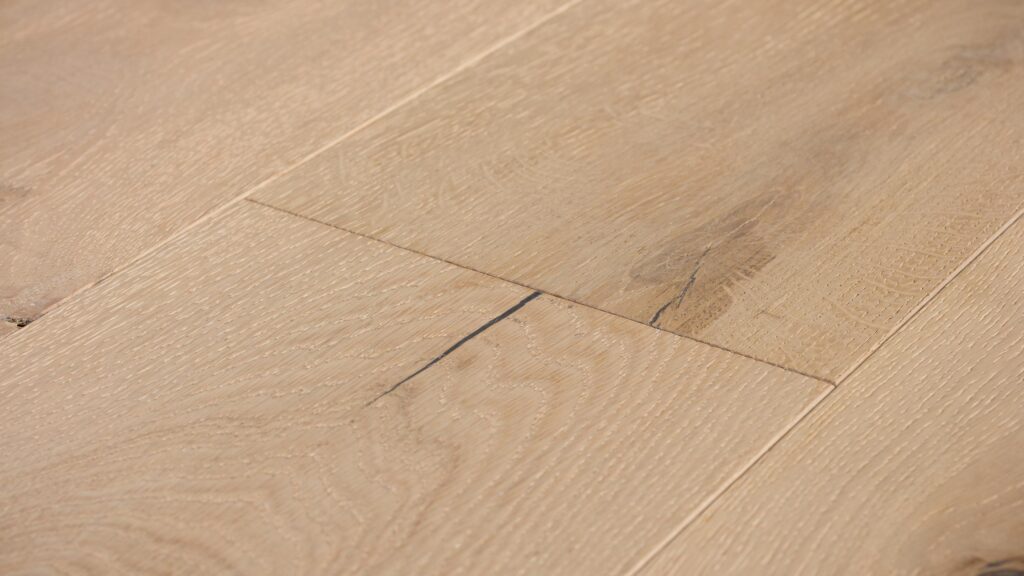
The Natural Allure of Solid Hardwood
Solid hardwood is a classic choice, milled from a single piece of wood, offering a warm, traditional look. It stands out for its ability to last a lifetime and offers the flexibility of being sanded and refinished multiple times.
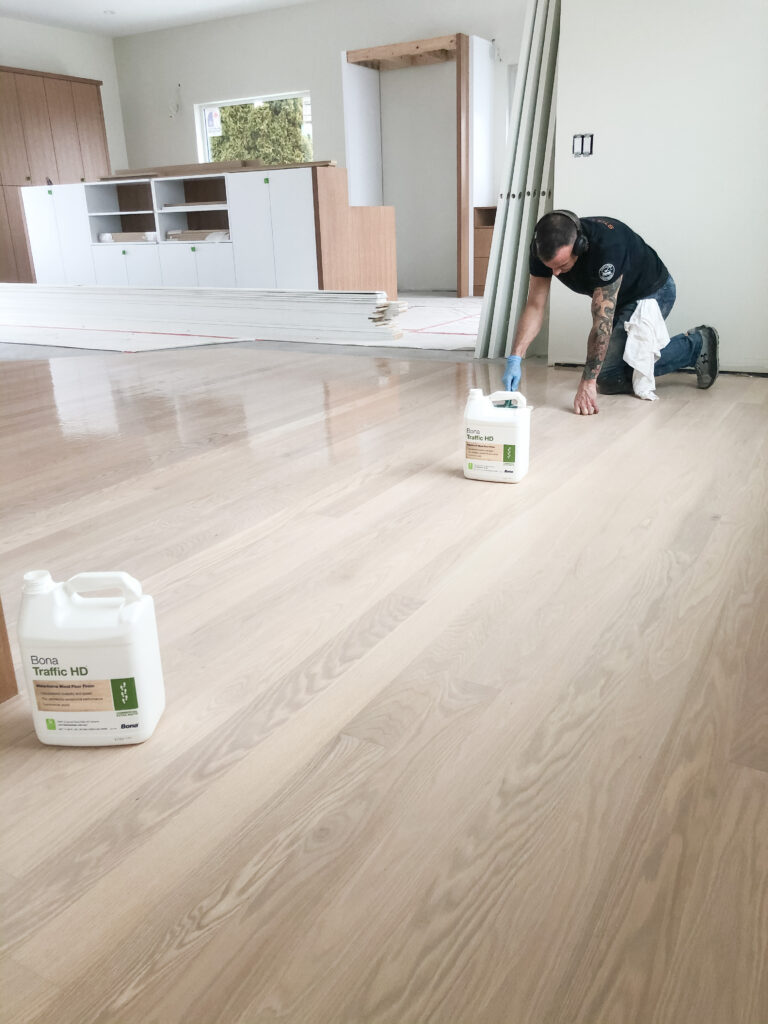
Engineered Hardwood: Innovation Meets Style
Alternatively, engineered hardwood boards are crafted using a blend of high-quality woods with a top layer of hardwood veneer. The result is a more stable product that can withstand moisture and temperature fluctuations, making it an excellent choice for basements, over concrete subfloors or when choosing a hardwood in a width wider than 4 1/2″.
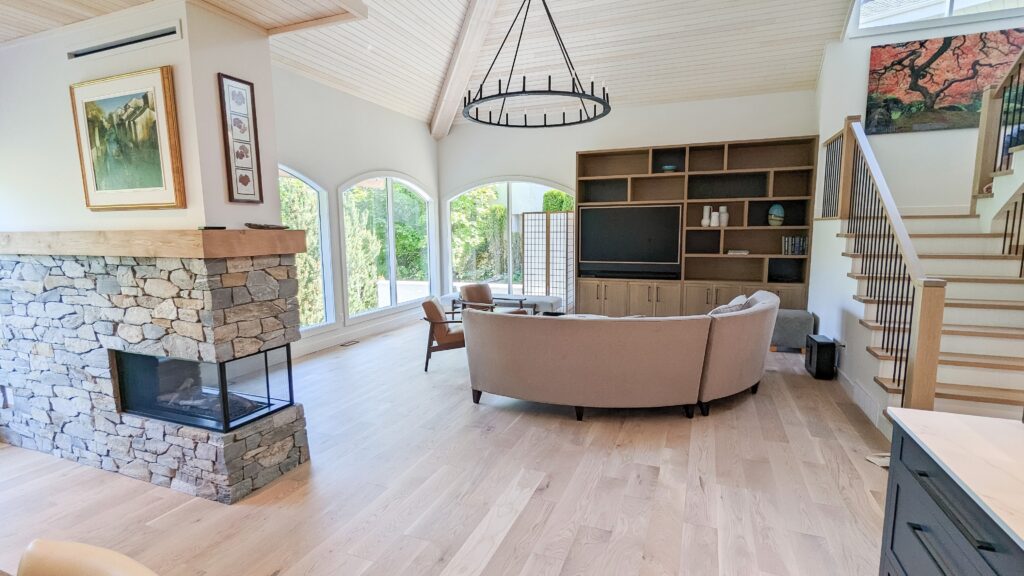
Stability: Engineered’s Secret Weapon
A primary differentiating factor between solid and engineered hardwood is its stability. Solid hardwood, being a single slab of wood, is more susceptible to expansion and contraction due to temperature and humidity changes. Engineered hardwood, with its multi-layered construction, was designed to resist these movements and is consequently a preferred choice in environments that traditional hardwood can’t tolerate as well.
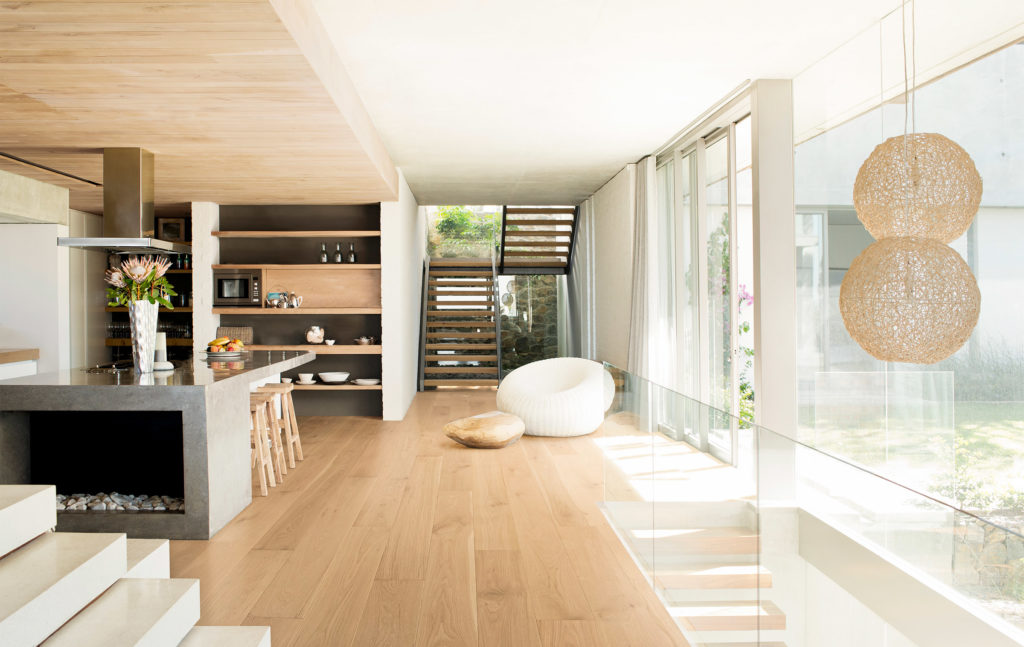
Overcome Challenges with Engineered Hardwood
For areas with higher than average moisture or fluctuating temperatures, such as basements or regions with distinct seasons, engineered hardwood offers a stable and reliable flooring solution. Its layered construction ensures a stronger resistance to warping and bowing.

Wear Layer and Refinishing
Refinishing your hardwood floor not only allows you to rejuvenate its appearance but also increases its lifespan. Knowing how many times you can refinish your floor before you need to replace it is a crucial factor to consider.
A quality engineered hardwood will have a thick enough wear layer for multiple refinishes. Not all engineered hardwoods are equal. Look for a 3mm or 4mm wear layer and a quality core material such as baltic birch for stability.
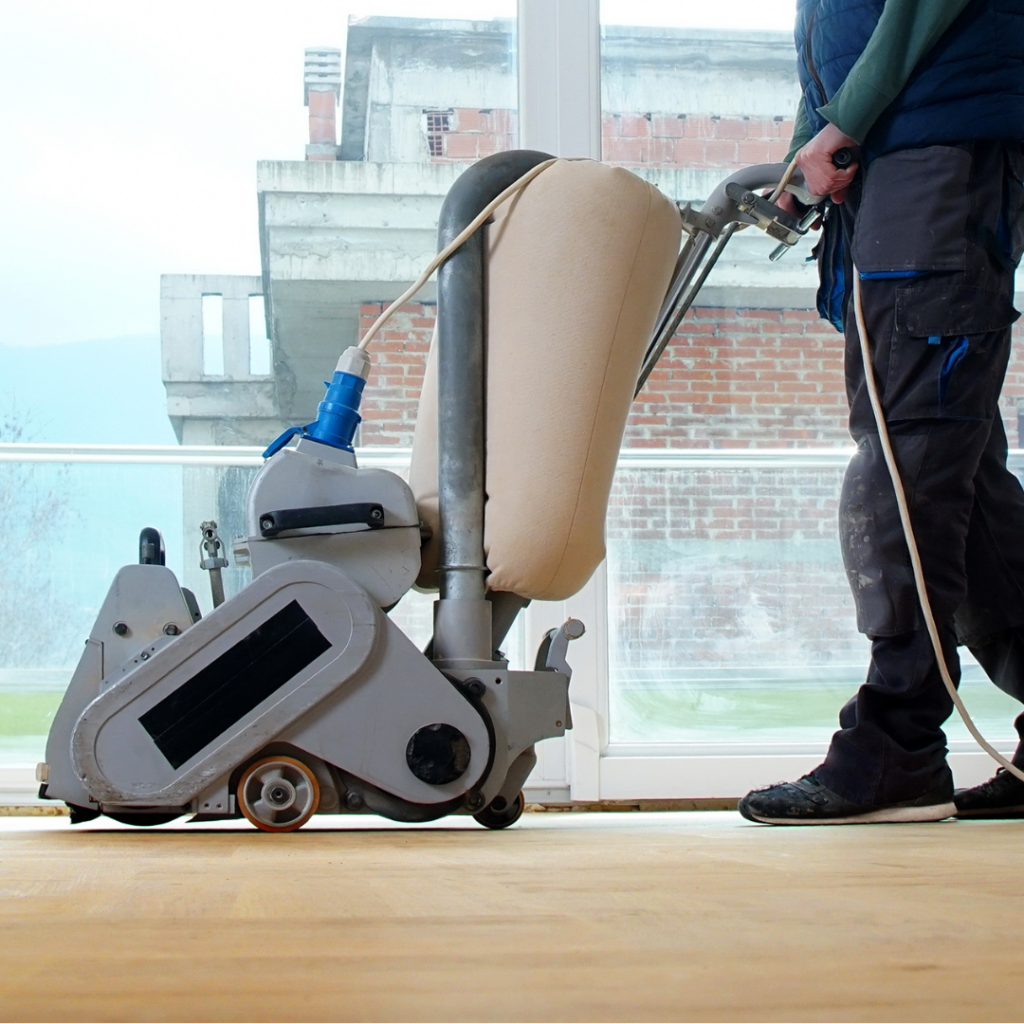
The Thick and Thin of It: Wear Layers Explained
Engineered hardwood’s top layer, or wear layer, can be significantly thinner than that of solid hardwood. This varies across engineered products, but a thinner wear layer means fewer opportunities for sanding and refinishing. Solid hardwood and engineered hardwoods with a 3mm or 4mm wear layer, can generally undergo more refinishes throughout its life due to its thicker, uniform structure.

Veneer Cuts and Aesthetic Impact
The aesthetics of your hardwood floor are largely influenced by how the wood veneers are cut. Both solid and engineered hardwood can offer a range of looks based on the cut of the wood grain.
Understanding the Grain: Veneer Cutting Techniques
The cutting method determines the pattern you’ll see on the finished floor. Rotary-cut veneers produce a broad, bold grain pattern but this method can cause delamination in the future. We would not recommend this style of cutting. Sliced veneers provide a more subtle look, akin to the solid boards they’re cut from. Sawn veneers result in a combination of the two, with a mixed grain appearance.
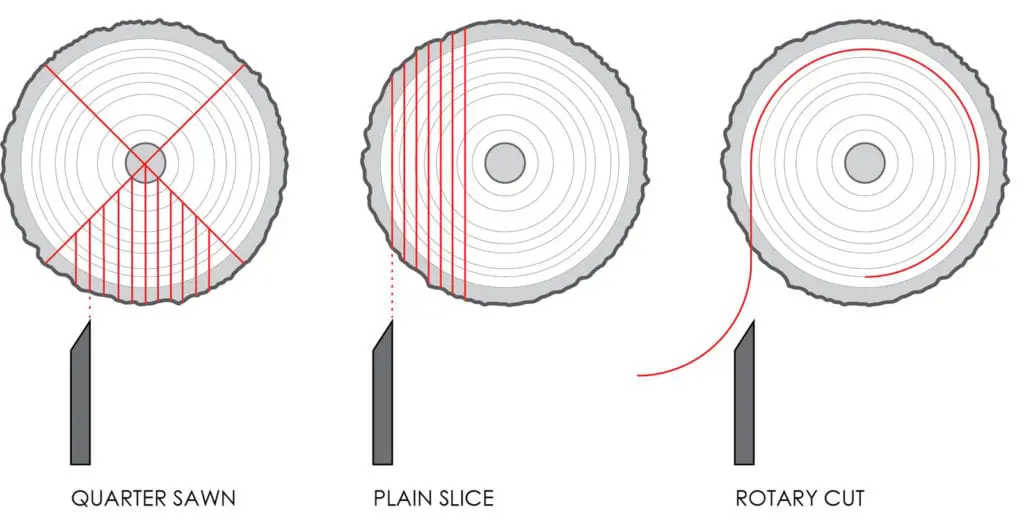
The Environmental Focus of Engineered Hardwood
As sustainability becomes an increasingly important consideration for homeowners and designers, the environmental impact of your flooring choice weighs heavily. Comparing the eco-friendliness of solid versus engineered hardwood can play a significant role in your decision-making process.
Engineered hardwood, in certain cases, can be the more sustainable choice. By using a veneer layer over a core made from rapidly renewable wood species or by using wood from managed forests, the environmental impact can be reduced. It’s important to note, however, that solid hardwood sourced from responsible sources also has an eco-friendly appeal.

Making the Right Decision for Your Home
Choosing between solid and engineered hardwood floors requires a comprehensive understanding of your desired look, the area of installation, and the floor’s expected usage. Both types of hardwood have their own set of pros and cons, and the specific needs of your project will ultimately dictate which one is the perfect fit.
Remember, as with any significant home improvement, it’s always wise to consult with a professional before making a final decision. They can offer personalized advice based on the unique attributes of your home and guide you toward the hardwood flooring that marries functionality with flair. Your local Kelowna flooring experts have the know-how and experience to assist you in this important decision.
For inspiration visit our Instagram page by clicking HERE
